Physical Address
304 North Cardinal St.
Dorchester Center, MA 02124
A diffuse infiltrating glioma of adults consisting of cells resembling oligodendroglia, often with chromosomal deletions of 1p and 19q; typically located in the cerebral hemispheres
World Health Organization (WHO) Grade II
Constitute 3% of primary brain tumors and account for about 10% of all gliomas
Peak incidence in fourth and fifth decades of life; children not usually affected
Men slightly more affected than women (1.1 : 1)
Lesions typically arise in the cerebral cortex, usually in the frontal lobe
Because of cortical location, two thirds of patients present with chronic seizures
Other symptoms may include headache and focal neurologic deficits
Median survival is greater than 10 years in some studies, especially with co-deleted chromosomes 1p and 19q
Advanced age carries a worse prognosis
Surgical resection when tumor located in noneloquent brain regions
Chemotherapy and radiation usually reserved for anaplastic tumors
Hyperdense lesion with ill-defined edges on T2-weighted MRI
Hypodense on T1-weighted MRI without contrast enhancement
CT scan will often show calcifications
Soft pink-gray lesion that is ill-defined with blurring of gray-white junction
Calcifications may be present, giving a gritty consistency to the tumor
Monomorphic tumor cells with tendency to form small clusters
Uniform, round, hyperchromatic nuclei
Very low or absent mitotic activity
Perinuclear halos (“fried egg” appearance) are an artifact of formalin fixation: not seen on frozen sections
A delicate, “chicken wire” capillary vasculature is often present
Tumor cell nuclei sometimes form a palisading pattern
Microcalcifications frequently present but not specific
GFAP is variably reactive in tumor cells, but highlights trapped astrocytes
GFAP positive in minigemistocytes and gliofibrillary oligodendrocytes
S-100 positive and usually p53 negative
Ki-67 labeling index is highly variable and dependent upon grade
Mutated form of IDH-1 is immunoreactive in about 75% of oligodendrogliomas
Co-deletion of 1p and 19q associated with better prognosis in about 80% of tumors
Isocitrate dehydrogenase-1 ( IDH-1 ) gene mutations occur in 50% to 80% of low and intermediate grade diffuse astrocytomas and oligodendrogliomas; about 75% of oligodendrogliomas have such mutations
Dysembryoplastic neuroepithelial tumor
Diffuse astrocytoma
Clear cell ependymoma
Demyelinating diseases or other macrophage-rich lesions
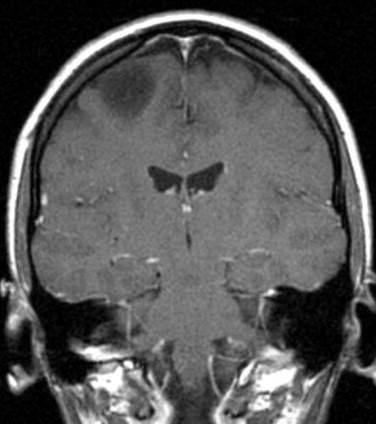
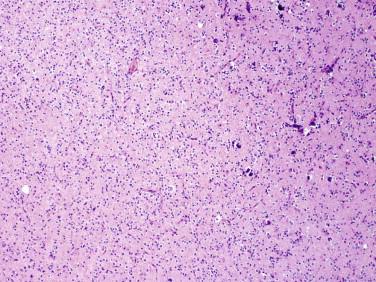
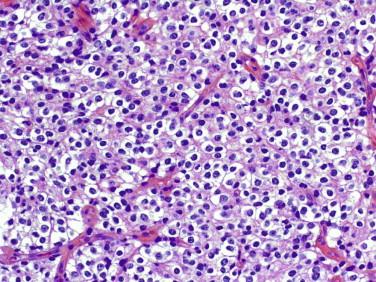
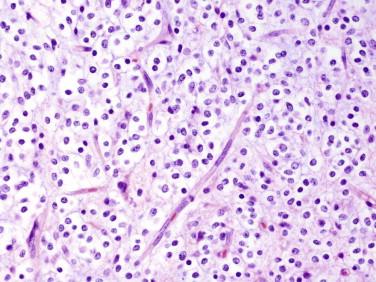
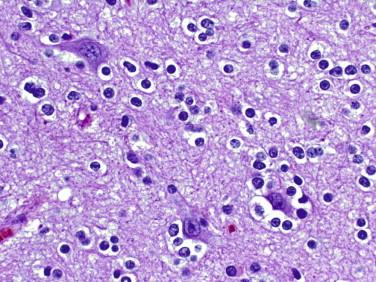
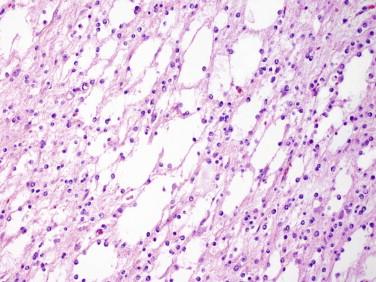
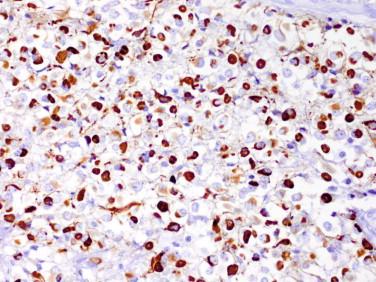
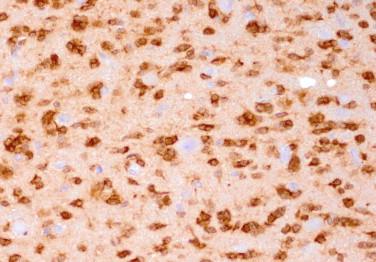
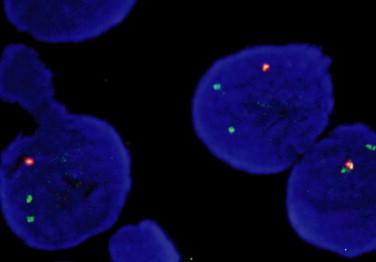
Oligodendroglial tumor with malignant histologic features
WHO Grade III
Accounts for 1% of all primary brain tumors
20% to 30% of all oligodendroglial tumors are anaplastic oligodendrogliomas
Typically occurs in adults, with peak age of onset 45 to 50 years
Slight male predominance
Become a Clinical Tree membership for Full access and enjoy Unlimited articles
If you are a member. Log in here